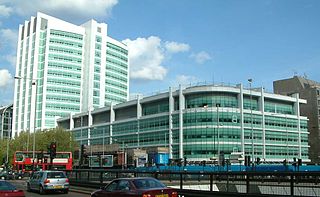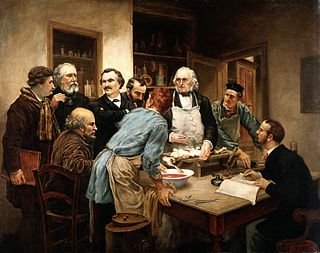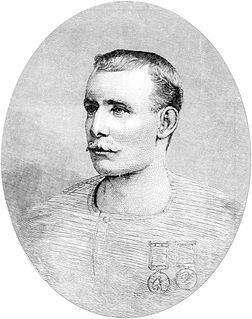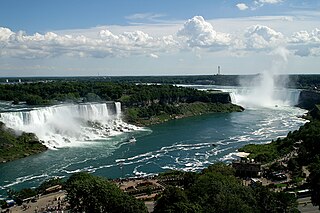The Royal College of Science was a higher education institution located in South Kensington; it was a constituent college of Imperial College London from 1907 until it was wholly absorbed by Imperial in 2002. Alumni include H. G. Wells and Brian May and are distinguishable by the letters ARCS(Associate of the Royal College of Science) after their name. Organisations linked with the college include the Royal College of Science Union and the Royal College of Science Association.

Amos Eaton was an American botanist, geologist, and educator who is considered the founder of the modern scientific prospectus in education, which was a radical departure from the American liberal arts tradition of classics, religious classes, lecture, and recitation. Eaton co-founded the Rensselaer School in 1824 with Stephen van Rensselaer III "in the application of science to the common purposes of life". His books in the eighteenth century were among the first published for which a systematic treatment of the United States was attempted, and in a language that all could read. His teaching laboratory for botany in the 1820s was the first of its kind in the country. Eaton's popular lectures and writings inspired numerous thinkers, in particular women, whom he encouraged to attend his public talks on experimental philosophy. Emma Willard would found the Troy Female Seminary, and Mary Mason Lyon, the Mount Holyoke Female Seminary. Eaton held the rank of senior professor at Rensselaer until his death in 1842.

Bromfield is a village and civil parish in the Allerdale district of Cumbria, England.

The history of Michigan State University (MSU) dates back to 1855, when the Michigan Legislature established the Agricultural College of the State of Michigan in East Lansing, with 3 buildings, 5 faculty members and 63 male students. As the first agricultural college in the United States, the school served as a prototype for future land-grant institutions under the Morrill Act enacted during Abraham Lincoln's presidency. The school's first class graduated in 1861 right after the onset of the American Civil War. That same year, the Michigan Legislature approved a plan to allow the school to adopt a four-year curriculum and grant degrees.

Frank Handford was an English rugby union international who played on four occasions for his country and was part of the first official British Isles team that toured South Africa in 1910.
The University of Wisconsin–Madison College of Agricultural and Life Sciences offers the one- or two-year Farm and Industry Short Course (FISC) program to high school graduates interested in farming or one of Wisconsin’s many other agricultural industries. The program runs from November to April and has an average enrollment of 135 students.

James Davidson was an English Rugby Union Football international who came from Aspatria, in Cumberland, Davidson was a stonemason and a builder by trade.
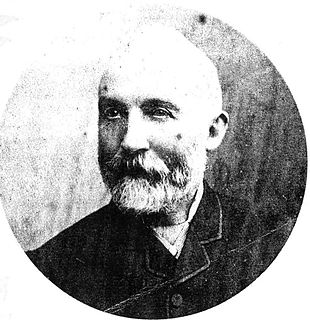
The Aspatria Agricultural Cooperative Society was established in Aspatria, Cumberland, England in 1870, after a group of local farmers combined to deal in artificial manures, feeding stuffs, seeds, and agricultural implements. Although formed in a small rural community, the society had the integrity to sue agricultural agencies when their guarantees did not conform to their advertised products. Although one of the first organisations of its kind, it continues to flourish when others fell by the wayside and is now arguably the oldest of its kind in the world. Moreover, the society became a catalyst which empowered three local men to further the cause of agriculture by establishing the Aspatria Agricultural College, the second of its kind in the world.

Henry Thompson (MRCVS) was a founder member of the Aspatria Agricultural Society, the Aspatria Agricultural Cooperative Society and the Aspatria Agricultural College.
William Thompson Casson (1844–1909) was a leading English coach designer and coach manufacturer, who, in the latter part of the nineteenth century. designed and built coaches for Queen Victoria and other members of the European nobility. His reputation earned him many honours and accolades; he was elected member of the Royal Society of Arts, and received the rare honour: Freedom of the City of London.

The Rev. William Slater Calverley (1847–1898) was an unassuming rural English vicar who through diligent study and painstaking scrutiny became an extraordinary amateur antiquarian. Although born in Leicestershire, Calverley claimed his fame through interpreting the carved sculptured relics that he and others found in Cumberland churchyards. He made intricate drawings, corresponded with academic authorities, and gave his own interpretation to meaning, which he then relayed to a wider audience. Calverley later reproduced in intricate detail a life-sized reproduction of the famous Gosforth Cross, which now stands in Aspatria churchyard.
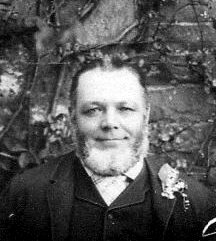
Thomas Farral was a Cumbrian teacher, author and agricultural authority, who today, is most remembered for his Cumberland dialect poems and stories published in Betty Wilson's Cummerland Teals.
William Catton Grasby was an Australian agricultural journalist and educationist.
Sir Cadwaladr Bryner Jones was a leading figure in Welsh agricultural education and an eminent civil servant. He was educated at Dolgellau Grammar School, Aspatria Agricultural College and Durham University, where he received his MSc degree.
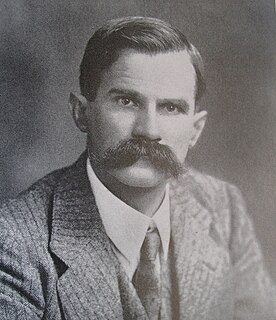
William Wilson FRS FHAS was a leading figure in academic circles. He was born at Goodyhills, in the Abbey Holme district of Cumberland in 1875. He was educated at the village school at Holme St Cuthbert, Cumberland, before attending the Aspatria Agricultural College, Aspatria, Cumberland.

Oren Cornelius Gregg was a farmer and educator from Minnesota. In the 1880s, agricultural education in Minnesota was in trouble: farmers would not travel to the Twin Cities for classes, and university students did not want to study farming. Gregg, a successful dairy farmer from Lyon County, saved the day by bringing lectures directly to farmers. Beginning in 1885, he led the Minnesota Farmers' Institute, a public lecture series that became the agricultural extension service at the University of Minnesota. Through the institutes that he held across the state, Gregg encouraged farmers to diversify their crops and taught them how to make dairy farming more efficient.
William Fream (1854–1906) was an English writer on agriculture.

Dora Glover Saker was an instructor in cheese-making for Somerset County Council. The rediscovery of her book, Practical Cheddar Cheese-making (1917), by cheese-makers in the twenty-first century has been credited with inspiring a revival of interest in historic cheese-making methods and to have "quickly acquired cult status amongst farmhouse cheese-makers".







